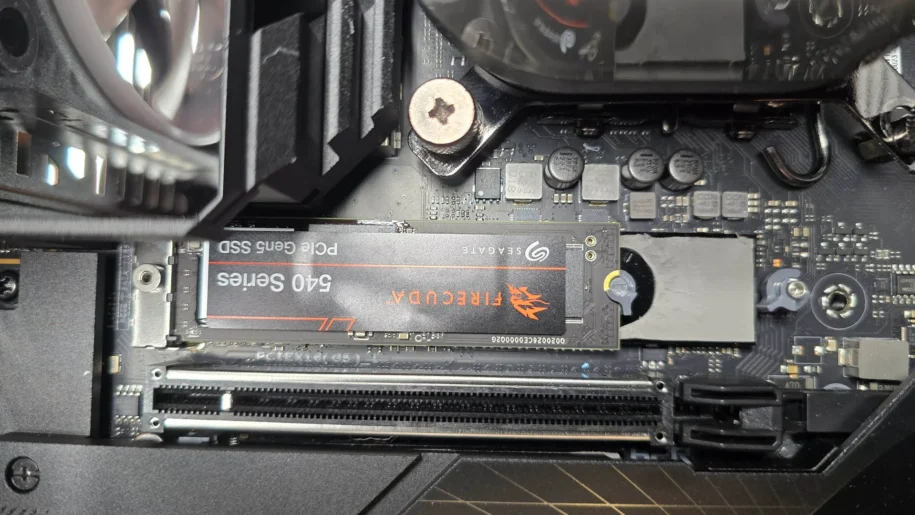
Technology never stops developing. In PC gaming, new tech emerges all the time that pushes performance to new heights. One of the most important components of modern gaming rigs is the PCIe (Peripheral Component Interconnect Express) slot, a critical element that connects your graphics card, SSDs, and other high-performance peripherals to your motherboard. While PCIe 4.0 has been the standard for several years, many are moving on to PCIe 5.0 has generated excitement in the gaming community.
But what exactly is the difference between PCIe 4.0 and PCIe 5.0, and how does it affect your gaming experience? In this article, we’ll break down the differences between these two standards and help you decide whether PCIe 5.0 is worth the upgrade for your next gaming PC.
Table of Contents
Understanding PCIe and its Role in Gaming PCs
PCIe is the interface standard that allows high-speed communication between the components in your computer. It’s the highway through which data travels between your CPU, GPU, SSD, and other peripherals. Each new generation of PCIe usually doubles the bandwidth of its predecessor, meaning that newer versions offer faster data transfer rates and can handle more intensive workloads.
For gamers, this directly impacts how quickly games load, how fast assets are processed, and how efficiently your graphics card can render scenes in real time – if the hardware you have can take advantage of the extra bandwidth. As games become more graphically demanding, with higher-resolution textures and real-time ray tracing, the need for faster data transfer becomes more critical.
PCIe 4.0: A Proven Standard for Gamers
Introduced in 2017, PCIe 4.0 has been a major leap forward for gaming PCs, offering a significant improvement over PCIe 3.0. With a bandwidth of 16 GT/s (gigatransfers per second) and a maximum data throughput of 2 GB/s per lane (with a total of 32 GB/s for 16 lanes), PCIe 4.0 dramatically increased the speed at which data could be transferred between your GPU and other components.
For gaming, PCIe 4.0 has proven to be more than capable of handling the latest AAA titles. Modern GPUs, such as the NVIDIA RTX 30 series and AMD’s Radeon RX 6000 series, are designed to take full advantage of PCIe 4.0, delivering smooth frame rates, faster load times, and enhanced performance, especially in games that support high resolutions like 1440p and 4K.
Additionally, PCIe 4.0 SSDs have set new records for data transfer speeds, significantly reducing game load times and improving overall system responsiveness. Gamers who prioritize speed and efficiency in their storage devices have found PCIe 4.0 SSDs to be a game-changer.
PCIe 5.0: The Next Level of Performance
PCIe 5.0, introduced in 2019, represents the next step in PCIe evolution. It doubles the bandwidth of PCIe 4.0, with a staggering 32 GT/s and a data throughput of 4 GB/s per lane (up to 64 GB/s for 16 lanes). This massive increase in speed opens the door for even more demanding applications and gaming experiences.
For high-end gaming, PCIe 5.0 offers potential improvements, especially for future GPUs and storage solutions. The increased bandwidth could be beneficial for tasks such as 8K gaming, multi-GPU setups, and VR, where massive amounts of data need to be processed quickly. Furthermore, the upcoming PCIe 5.0 SSDs promise even faster data transfer speeds, further reducing game load times and improving overall system performance.
However, the real-world impact of PCIe 5.0 on gaming performance is still largely speculative because we do not have hardware that takes full advantage of this extra bandwidth and speed. Even the current top of the line GPUs, like the NVIDIA GeForce RTX 4090 and Radeon RX 7900 XTX and games do not fully utilize the extra bandwidth provided by PCIe 5.0, and for most gamers, the difference between PCIe 4.0 and PCIe 5.0 may not be immediately noticeable. That said, as more demanding games and applications are developed, PCIe 5.0 is likely to become more relevant.
Should You Upgrade to PCIe 5.0?
The decision to upgrade to PCIe 5.0 depends largely on your gaming setup and future plans. If you’re building a high-end system designed to handle the most graphically intensive games and you’re interested in future-proofing your rig, PCIe 5.0 offers a significant performance boost that could pay off in the long run. So it might be worth getting a PCIe 5.0 equipped motherboard to “future proof” your system a bit.
However, for most gamers, PCIe 4.0 is still more than sufficient for current games and hardware. Modern GPUs and SSDs are designed to run efficiently on PCIe 4.0, and unless you’re planning on pushing your system to its absolute limits, the extra bandwidth of PCIe 5.0 may not provide a noticeable benefit—at least for now.
Closing Thoughts
PCIe 4.0 and PCIe 5.0 represent two generations of PCIe technology, each with its own advantages. While PCIe 4.0 is a proven standard that offers excellent performance for current games, PCIe 5.0 can take data transfer speeds to the next level, providing future-proofing for upcoming hardware and applications that make full use of it.
Ultimately, the choice between PCIe 4.0 and PCIe 5.0 depends on your specific needs and how far you want to push your gaming PC. If you’re building a high-performance rig with the latest and greatest components, PCIe 5.0 is an excellent choice. However, for most gamers, PCIe 4.0 will continue to deliver outstanding performance for years to come. Explore our full selection of PCIE 4.0 and 5.0 compatible components when configuring a gaming PC on our website.